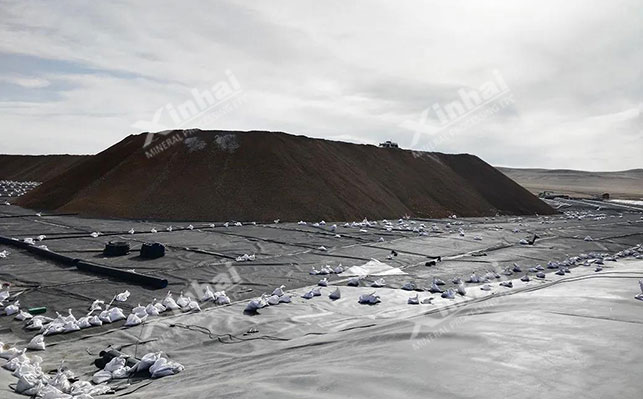In the field of mining, the extraction of gold and silver ore has always been
a hot topic. Traditional extraction methods often require large amounts of
resources and energy, and also have adverse effects on the environment.
Therefore, in recent years, heap leaching has gained attention as a new type of
ore extraction technology. This article will delve into the advantages,
disadvantages, and operational procedures of heap leaching of gold and silver
ore.
Advantages:
Environmental friendliness: Heap leaching does not require large amounts of chemical reagents or high temperature and pressure conditions, reducing pollution to the environment.
Low cost: Compared to traditional extraction methods, heap leaching has lower investment and operating costs, which helps to reduce production costs.
Strong adaptability: Heap leaching is suitable for various types of gold and silver ores, with relatively low requirements for ore grade and particle size.
High extraction rate: Heap leaching can achieve efficient extraction of gold and silver ores, with high extraction rates, maximizing resource utilization.

Disadvantages:
Long extraction cycle: Heap leaching has a long extraction cycle, usually taking several months or even years to complete, which is not suitable for situations requiring rapid recovery of gold and silver.
Susceptible to weather conditions: The effectiveness of heap leaching is easily affected by weather conditions such as rainfall and temperature changes, which can affect the leaching process.
Large land footprint: Heap leaching requires a large amount of land for ore stacking and solution processing facilities, which demands high land resources.
The operational procedures of heap leaching of gold and silver ore typically include the following stages:
Ore processing: Firstly, the collected gold and silver ore undergoes crushing, grinding, and other processing to achieve appropriate particle size and increase the exposed surface area of gold and silver.
Stacking: The processed ore is stacked on open-air sites to form a heap leach pile. Specific stacking structures are used to ensure that the solution can uniformly penetrate the entire heap.
Leaching: A solution containing leaching agents such as cyanide is evenly sprayed onto the heap leach pile using a spraying system. The leaching agents in the solution form stable cyanide complexes with gold and silver, gradually dissolving them into the solution.
Solution collection: The solution containing gold and silver is collected in collection ponds through a designed liquid collection system.
Gold and silver extraction: The collected solution containing gold and silver is sent to extraction equipment, where specific extraction agents are used to extract gold and silver from the solution.
Residue treatment: The residues after leaching are processed, usually using methods such as solid-liquid separation and solution recovery to minimize waste emissions.
Gold and silver refining: Finally, the extracted gold and silver undergo refining to increase their purity, obtaining the final gold and silver products.
Heap leaching of gold and silver ore, as a new type of ore extraction technology, has significant advantages in improving resource utilization, reducing production costs, and protecting the environment. However, its long operation cycle and susceptibility to weather conditions should also be given attention. Through continuous technological innovation and process improvement, it is believed that heap leaching of gold and silver ore will be more widely applied in the future, contributing to the sustainable development of the mining industry.